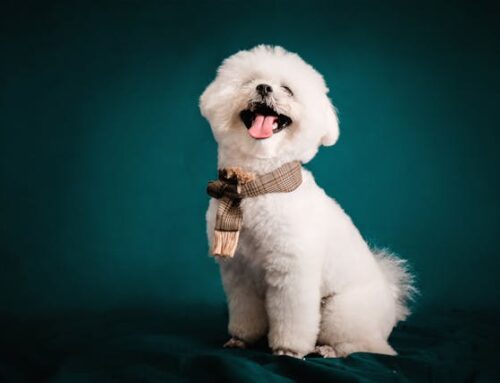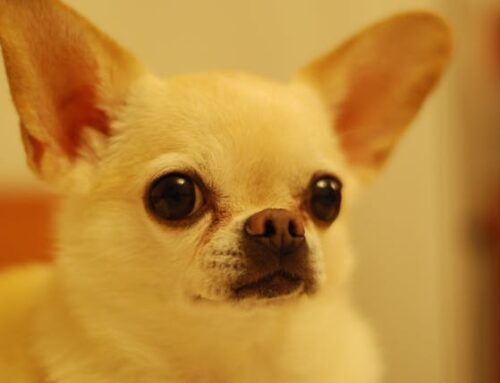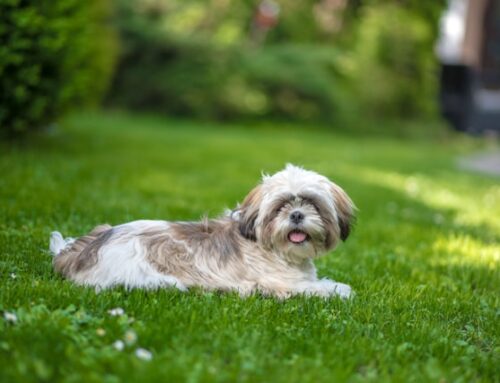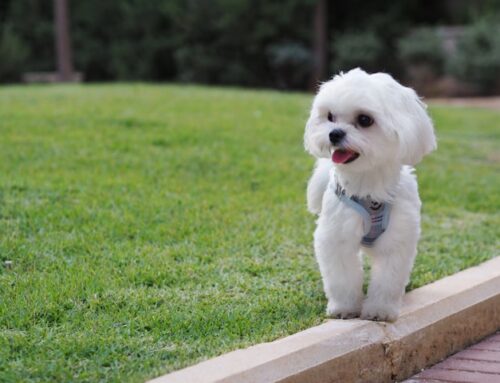Introduction: How Big Do Teddy Bear Dogs Get
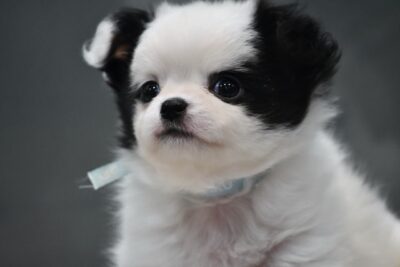
If you’re considering the cute and charming Teddy Bear dog as your new companion, you’re likely wondering, “How big do Teddy Bear dogs get?” Teddy Bear dogs typically mature to a height of 9 to 12 inches and weigh between 6 to 14 pounds.
This comprehensive article will guide you through everything you need to know about Teddy Bear dog sizes. From the key factors that influence their growth to the variety of sizes available across different breeds, understanding the size of these adorable dogs is essential for potential owners.
Whether you’re interested in specific Teddy Bear dog breeds such as the Cavapoo, Havapoo, or Shichon, or you’re considering a teddy bear puppy or a mixed breed, knowing about their size will help you choose the perfect, affectionate, and cuddly companion for your home. Read on to discover more about these delightful dogs and find the perfect match for your lifestyle.
Understanding the Size Spectrum of Teddy Bear Dogs
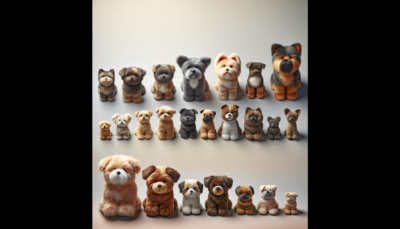
Despite their name, Teddy Bear dogs come in a variety of shapes and sizes. Ranging from the small Teacup Teddy Bear to the slightly larger Toy Teddy Bear, these designer breeds can weigh as little as 6 pounds and stand at just 9 inches tall or up to 14 pounds and reach a height of 12 inches.
If you’re wondering, “How big do Teddy Bear dogs get?” it’s important to note that factors like genetics and diet play a role in determining their size. Teddy Bear dogs follow their own unique growth patterns from puppyhood to adulthood, and there’s always an option that fits your preference whether you live in the city or suburbs.
With multiple options for teddy bear breeds available, finding the perfect fit for your lifestyle is easy!
Factors Influencing Size How Big Do Teddy Bear Dogs Get
The size of a Teddy Bear dog is greatly influenced by genetics, specifically the STC2 gene. Even within the same litter, there can be variations in size as some pups may take after their small Shih Tzu parent while others lean towards the larger Bichon Frise.
If you’re wondering, “How big do Teddy Bear dogs get?” it’s important to understand that genetics play a significant role in their size. Additionally, diet also plays a crucial role in determining the size of these dogs.
A well-balanced diet designed for small breeds with higher fat content helps support their faster metabolism and calorie needs according to body weight. Providing them with a nutritious diet also contributes to maintaining their adorable fluffy coats.
With genetics and diet both playing important roles, Teddy Bear dogs can range in size, offering a variety of options for potential owners.
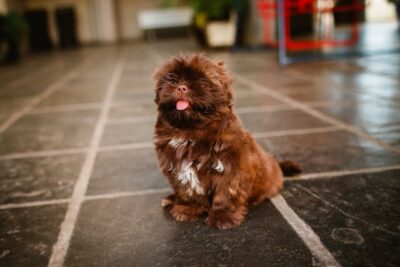
Growth Patterns
Teddy Bear dogs typically reach their full size between the ages of 12 to 18 months, with an average height of 9 to 12 inches and a weight range of 6 to 14 pounds.
It’s worth noting that some Teddy Bear breeds are mixed with Toy Poodles, which can impact their final size.
Wondering, ‘how big do teddy bear dogs get?’ The growth trajectory for Teddy Bear dogs may vary depending on the breed mix.
Fortunately, there are resources such as growth charts and calculators available that can provide a rough estimate of how they will develop in terms of height and weight over time. Keep in mind that genetic diversity resulting from different breeding combinations can also influence their growth pattern significantly.
Comparing Sizes Across Teddy Bear Breeds

After discussing the factors that influence size, it’s important to explore the various sizes of different breeds in the Teddy Bear dog category. These dogs are a mix of Poodles and Spaniels, resulting in small or medium-sized pets.
Some may also have Bichon Frise parents, which can affect their overall appearance. Examples of smaller to medium sized Teddy Bear breeds include hybrids like Cavapoos, Havapoos, and Cockapoos, making them ideal for households with other pets.
On the other hand, there are larger options such as Sheepadoodles, a mix between an Old English Sheepdog and a Poodle. The range of sizes available among these breeds provides plenty of choices for those considering adopting a teddy bear dog.
Wondering, ‘how big do teddy bear dogs get?’ The range of sizes available among these breeds provides plenty of choices for those considering adopting a teddy bear dog.
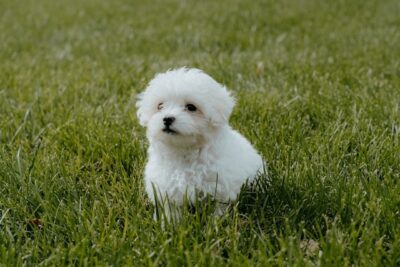
Smaller Varieties
If you are fond of pint-sized pets, then the smaller versions of teddy bear breeds like Maltipoos and Shih Poos might be perfect for your liking.
These small dogs are a blend between different breeds such as Maltese and Toy Poodle in case of Maltipoo, and Shih Tzu and Poodle for a ShiPoo. They make ideal companions for apartment living.
Weighing approximately 5 to 25 pounds with a height ranging from 6 to 14 inches, these compact canines are well-suited for limited spaces like apartments.
Wondering, ‘how big do teddy bear dogs get?’ Their hypoallergenic coat is especially beneficial for those who suffer from allergies since it allows them to enjoy the company of these dogs without any discomfort or allergic reactions.
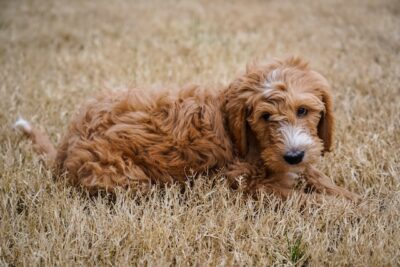
Larger Mixes
If you have extra space and are looking for a dog that is more energetic, consider larger mixed breeds like Miniature Goldendoodles or Schnoodles in the teddy bear category.
A mix of Golden Retriever and Miniature Poodle creates the adorable Miniature Goldendoodle while a combination of Schnauzer and Poodle results in a playful Schnoodle.
Schnoodles, as well as other bigger teddy bear mixes such as Giant-sized variations, are known for their cheerful demeanor, but may require additional grooming maintenance.
These pups can vary from tiny toys sizes to massive giants while most Miniats can vary from tiny toys to massive giants.
If you’re wondering ‘how big do teddy bear dogs get,’ it varies based on the specific mix and genetics, with Miniature Goldendoodles and Schnoodles typically ranging from toy to giant sizes.

The Impact of Parent Breeds on How Big Do Teddy Bear Dogs Get
Although there have been some mentions of how the parent breeds can influence Teddy Bear mixes, it would be beneficial to delve into this topic further. This is because the size of a Teddy Bear dog can be greatly affected by its parents.
For instance, when Shih Tzu and Yorkshire Terrier (Shorkie), Bichon Frise and Shih Tzu (Shichon), or Cavalier King Charles Spaniel and Bichon Frise (Cavachon) are combined, they usually produce smaller teddy bear pups.
On the other hand, if you were to mix larger dogs such as Shih Tzus with Yorkshire Terriers again or include a Poodle in the mixture like Cavapoo or Cavachons do, then expect bigger sizes for your teddy bears.
Additionally, breeds like Lhasa Apso, known for being little dogs, and Mal Shi, contribute to the petite size of some Teddy Bear dogs categorized as designer dogs. If you’re wondering ‘how big do teddy bear dogs get,’ it’s important to consider the specific mix of breeds in their lineage, as this can significantly impact their size.
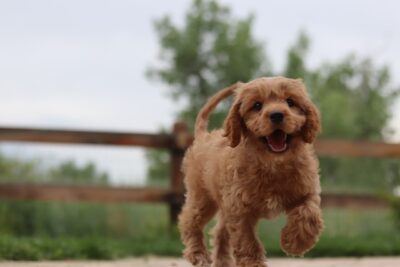
Predicting Your Teddy Bear’s Adult Size
Curious about how big do Teddy Bear dogs get? You can get a rough estimate by considering certain factors.
Breed average, as well as weight and height, are key indicators, but it’s important to note that genetics play a significant role in growth and predictions may not be completely accurate.
Living with Different Sized Teddy Bears
When deciding on a Teddy Bear dog, it’s important to consider the practical aspects of their size. Whether you prefer a small or large breed, different sizes of dogs require different care and accommodations.
Smaller breeds like Morkies are well-suited for cozy living spaces and can thrive in smaller households with one person. Despite their petite stature, these dogs still need regular grooming and exercise to stay healthy and happy.
To manage their energetic nature in compact environments, aim for at least 30 minutes of physical activity each day through indoor play or walks outside. This will help burn off excess energy and prevent boredom while promoting a calm manner. If you’re wondering how big do Teddy Bear dogs get, factors such as breed average, weight, and height play a role, but genetics also play a significant role in their size.
The Teddy Bear’s Coat and Size Relation

When considering getting a Teddy Bear dog, it’s essential to understand the impact of their size on their appearance and coat.
Knowing how big do teddy bear dogs get can help you prepare for their grooming needs. Regular grooming is necessary for these dogs, including brushing 2-3 times per week, monthly baths, and cleaning teeth and ears regularly.
Although most teddy bear breeds don’t shed much due to being low-shedding parents, breeds like the Bichon Frise may be more suitable for those with allergies if they maintain healthy skin.
Teddy bear puppies, known for their mixed breed heritage, often have adorable floppy ears and come in a variety of gorgeous colors.
Health Concerns Related to Size in Teddy Bear Dogs
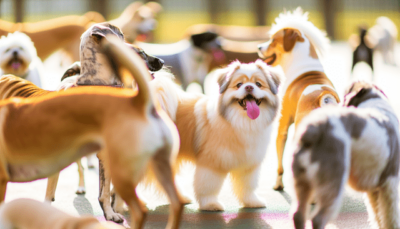
When considering a Teddy Bear dog as your potential pet, it’s important to be aware of the possible health risks associated with their size. This breed is known to have certain conditions such as joint problems, dental issues and weight management challenges.
Common health worries for teddy bear dogs include hip dysplasia, and intervertebral disc disease. To elbow, knee and hip joint dysplasia. Dental concerns are also common among this type of dog along with cataracts, hypothyroidism and epilepsy.
The small stature of Teddy Bears makes them more prone to these specific health concerns which can result in excessive barking when experiencing discomfort. To ensure good well-being not only for adult teddy bears but also their puppies, regular monitoring is highly recommended.

Ideal Environments for Different Sized Teddy Bear Dogs
Whether you live in a cozy urban flat or a spacious suburban house, there is undoubtedly a perfect teddy bear dog for your specific living situation.
Understanding how big do teddy bear dogs get is crucial for selecting the right breed. Smaller breeds such as Morkies can thrive in compact spaces with proper outdoor exercise and playtime.
For medium-sized teddy bear dogs to flourish, they require sufficient room and should receive two daily thirty-minute sessions of physical activity.
It’s important to match the size of the dog with the available space. They are most content when provided ample space to stay active throughout the day. With adequate training and care, even larger breeds can adjust well to smaller apartments.
The Long-Term Commitment: Life Expectancy of Teddy Bear Dogs
Owning a Teddy Bear dog means committing to their well-being for an extended period of time, as they typically live between 12-15 years. There may be some variation in lifespan among individual dogs.
The longevity of a Teddy Bear dog can also depend on its specific breed. For example, the Zuchon – one popular type within this category – tends to have an average lifespan ranging from 10-16 years. Mixed breeds often enjoy longer lifespans compared to purebred counterparts due to their diverse genetic makeup.
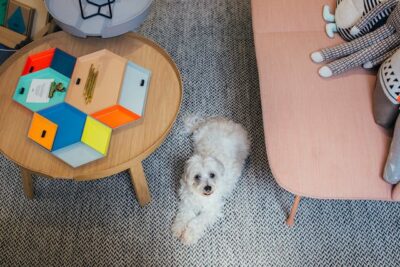
How to Choose the Right-Sized Teddy Bear Dog for You
When considering how big Teddy Bear dogs get, it’s crucial to match their size with your living space, lifestyle, and preferences.
These adorable companions typically range from 6 to 15 pounds and stand about 12 inches tall. If you reside in a compact apartment or have limited space, a smaller Teddy Bear dog like a Cavapoo or Cockapoo might be more suitable.
Conversely, if you have a spacious home or an active lifestyle, you might prefer a larger breed like a Miniature Goldendoodle. Understanding the size variations among Teddy Bear dog breeds is essential for selecting the perfect fit for your home and family.
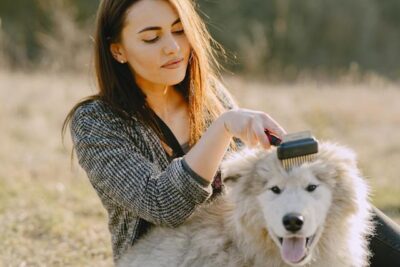
Brushing Techniques for Your Teddy Bear Dog
Understanding Teddy Bear Dog’s Coat Types
Understanding your Teddy bear dog’s coat type is crucial for effective grooming. These adorable pups boast diverse coat types, ranging from curly to straight. Knowing your pup’s coat type allows you to choose the right brushes and grooming routines.
This knowledge is essential for managing grooming requirements, selecting suitable products for different coat colors, and addressing the needs of allergy sufferers, especially those looking for hypoallergenic coats.
Frequency of Brushing
Regular brushing not only keeps your furry friend looking fabulous but also prevents matting and reduces shedding. Depending on the coat type, aim for at least 2-3 brushing sessions a week.

Bathing Procedures For Teddy Bear Dogs
Choosing Suitable Shampoos for Your Teddy Bear Dog
Choose dog-specific shampoos designed to maintain the natural oils in your teddy bear dog’s coat, keeping it healthy and shiny. While regular bathing is important, teddy bear dogs generally only need a bath every 4-6 weeks to stay clean and fresh.
Over-bathing can strip their coat of its natural oils, so it’s best to stick to a regular schedule and use gentle products to keep their fur looking its best.
Safe Bathing Practices
Make bath time a comfortable experience for your teddy bear dog by using non-slip mats in the tub and ensuring the water is lukewarm.
Be gentle when washing to avoid stressing your pet, and always remember to dry them thoroughly afterward to prevent any potential skin issues. These simple steps can help make bath time enjoyable and keep your teddy bear dog’s coat and skin healthy.
Nail Care For Your Teddy Bear Dog
Trimming Tips For Your Teddy Bear Pup
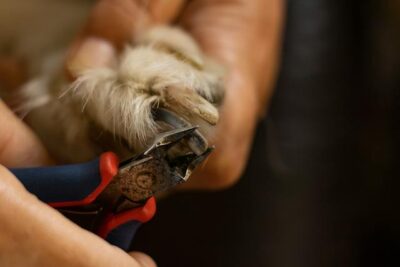
Regular nail trimming is essential for your teddy bear dog’s comfort and overall health. Use specialized dog nail clippers to trim the tips of their nails, being careful not to cut into the quick, which can cause pain and bleeding.
If you’re unsure about how to trim their nails safely, it’s best to seek professional help from a groomer or veterinarian. Keeping your teddy bear dog’s nails trimmed will prevent them from becoming too long, which can lead to discomfort and difficulty walking.
Importance of Regular Nail Maintenance
Long nails on your teddy bear dog can be uncomfortable and affect their posture, leading to potential joint issues. Regular nail trimming is essential to prevent these problems.
By keeping their nails trimmed, you can help your dog maintain proper posture and avoid pain associated with long nails. It’s a simple but important aspect of your teddy bear dog’s overall health and well-being.
Ear Cleaning For Your Teddy Bear Dog
Avoiding Infections in Your Teddy Bear Pup
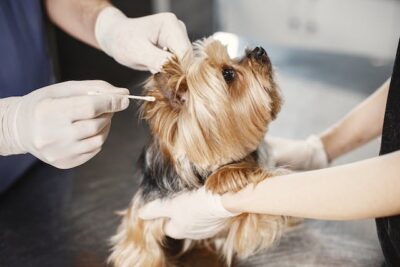
To prevent infections, it’s important to gently clean your teddy bear dog’s ears regularly. Use a vet-recommended ear cleaner and cotton balls to remove dirt and wax buildup. Be gentle to avoid causing any discomfort to your pet.
Regular ear cleaning also allows you to check for signs of redness, swelling, or odor, which could indicate an ear infection. By keeping your teddy bear dog’s ears clean and healthy, you can help prevent potential ear issues and keep them comfortable.
Gentle Cleaning Methods
It’s important to avoid inserting anything into your teddy bear dog’s ear canal when cleaning their ears. Instead, focus on cleaning the visible parts of the ear using a vet-recommended ear cleaner and cotton balls.
If you notice any issues such as redness, swelling, discharge, or a foul odor, it’s important to consult your vet promptly. They can provide proper diagnosis and treatment if needed. Regular ear cleaning and prompt veterinary attention can help keep your teddy bear dog’s ears healthy and free from infections.
Maintaining Oral Hygiene For Your Teddy Bear Pup
Importance of Dental Care For Your Teddy Bear Dog

Maintaining good oral hygiene is crucial for your teddy bear dog’s overall health. Dental issues can lead to systemic problems, impacting not just their teeth and gums but also their internal organs.
Introducing dental care early in your dog’s life can help make it a routine and prevent potential dental problems later on.
Regular brushing, dental chews, and annual check-ups with your vet are all important components of your teddy bear dog’s dental care routine. By prioritizing their oral health, you can help ensure a happy and healthy life for your furry friend.
Toothbrush Techniques
Regularly brushing your teddy bear dog’s teeth is essential for their oral health. Use a dog-friendly toothbrush and toothpaste to gently clean their teeth and gums. Aim for gentle, circular motions to effectively remove plaque and prevent tartar buildup.
Brushing your dog’s teeth regularly can help prevent dental issues such as gum disease and tooth decay. It’s best to start this routine early in your dog’s life to get them used to it. If your dog is resistant, try to make the experience as positive as possible with praise and rewards.
Appropriate Chew Toys for Dental Health
Chew toys are not just for entertainment; they also play a significant role in maintaining your teddy bear dog’s dental health. Opt for toys that are specifically designed to promote dental hygiene, as these can help keep your pup’s teeth clean and healthy. The act of chewing on these toys can help reduce plaque and tartar buildup, which can contribute to gum disease and other dental issues.
Additionally, chewing can be a natural stress reliever for dogs and can help satisfy their instinctual need to chew. By providing your teddy bear dog with appropriate chew toys, you can help improve their dental health and overall well-being.

Exercise Regimen
Tailoring Exercises to Breed Characteristics
Tailor your teddy bear dog’s exercise routine based on their breed characteristics. Some may thrive on energetic activities, while others may prefer a more laid-back approach.
Understand their exercise requirements, incorporate new tricks into their routine, and ensure a daily walk to keep them happy and healthy.
Daily Walks and Outdoor Activities
It’s important to ensure that your teddy bear dog gets daily walks to keep them healthy and happy. Incorporating outdoor activities during these walks can help keep your pup active and engaged. Adjust the duration and intensity of the walks based on your dog’s energy levels and preferences. Some dogs may enjoy longer walks with plenty of playtime, while others may prefer shorter, more leisurely strolls.
Regardless of the length, these walks are a great way for your outgoing companion to spend time outdoors, explore their surroundings, and burn off excess energy. Regular walks also provide mental stimulation, which is important for your dog’s overall well-being. By making daily walks a priority, you can help ensure that your teddy bear dog stays physically and mentally healthy.
Ideal Duration
Finding the right balance is key when it comes to exercising your teddy bear dog. Aim for a routine that is neither too short nor too long. Generally, a 30-minute to 1-hour exercise session each day is suitable for most teddy bear dogs. However, it’s important to consider your dog’s individual needs and energy levels.
Some dogs may require more exercise, while others may be content with less. Pay attention to your dog’s cues during exercise to ensure that they are not becoming overtired or overexerted. By finding the right balance, you can help keep your teddy bear dog healthy, happy, and well-exercised.
Exploring New Environments
Keep your teddy bear dog’s curiosity piqued by exploring a variety of environments. Whether it’s a new park, a beach, or a hiking trail, exposing your dog to different surroundings can help keep them mentally stimulated. New environments provide new sights, smells, and experiences, which can be exciting and engaging for your dog.
This kind of mental stimulation is important for preventing boredom and can help keep your dog happy and healthy. Plus, exploring new places together can strengthen the bond between you and your furry friend. So, don’t be afraid to mix up your walking routes and take your teddy bear dog on new adventures!
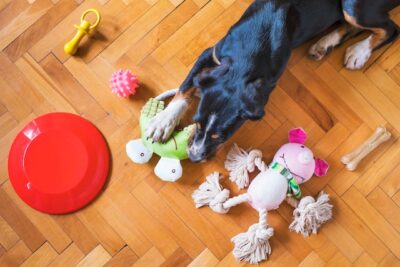
Indoor Play and Mental Stimulation
Puzzle toys and games provide mental stimulation, making indoor play equally important for Teddy Bear Dogs with outgoing personalities.
Incorporate short training sessions and engaging activities like hide and seek to keep your furry friend’s mind sharp and prevent the development of separation anxiety.
The Appeal of Smaller Teddy Bear Dogs
Portability and Travel
Smaller teddy bear dogs have a lot to offer beyond just their adorable looks. Their compact size makes them excellent travel companions, whether you’re planning a road trip or a flight. Their small stature allows them to comfortably fit in travel carriers or crates, making transportation easier and more convenient.
Additionally, their size makes them more adaptable to different travel environments, such as hotels or vacation rentals. Plus, their presence can add joy and companionship to your travel experiences. So, if you’re a frequent traveler or simply enjoy exploring new places, a smaller teddy bear dog could be the perfect companion for your adventures.
Indoor Living Dynamics
Teddy bear dogs, with their adaptability and small size, are well-suited for indoor living, making them an excellent choice for apartment dwellers. Their ability to thrive in smaller spaces means that they can be just as happy and content in an apartment as they would be in a larger home with a yard. Their compact size also means that they require less space for exercise, making it easier to meet their needs for physical activity indoors.
Additionally, their friendly and affectionate nature makes them great companions for apartment living, providing comfort and companionship in any size living space. So, whether you live in a cozy apartment or a spacious home, a teddy bear dog can be the perfect furry friend to share your space with.

The Charisma of Medium-Sized Teddy Bear Dogs
Robust Playfulness
Medium-sized teddy bear dogs offer a perfect balance of playfulness and adaptability. They are robust enough to enjoy outdoor adventures, such as hiking or playing in the park, while also being manageable indoors.
Their size allows them to be active and energetic when outdoors, yet they are still small enough to comfortably live in a variety of living spaces, including apartments or houses with smaller yards.
This versatility makes them a great choice for individuals or families who enjoy both indoor and outdoor activities. Additionally, their medium size often means they require less grooming and maintenance compared to larger breeds, making them a convenient and lovable addition to any home.
Outdoor Adventures
Medium-sized teddy bear dogs are perfect companions for outdoor enthusiasts. They can enjoy activities like hiking and playing fetch, thanks to their size and energy levels. Their medium size allows them to participate in more strenuous activities without getting too exhausted, making them ideal for active pet owners.
Whether you’re exploring nature trails or playing in the backyard, these dogs will happily join in the fun and keep up with your adventurous spirit. Plus, their love for outdoor activities can motivate you to stay active and spend more time outdoors, benefiting both you and your furry friend.
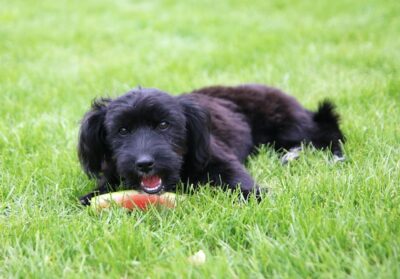
Common Misconceptions on How Big Do Teddy Bear Dogs Get
Debunking Size Stereotypes
Common misconceptions about how big do teddy bear dogs get often stem from their adorable appearance.
Contrary to stereotypes, these fluffy companions typically weigh between 8 to 16 pounds and stand about 9 to 12 inches tall at the shoulder.
While some may be smaller or larger due to genetic variations, responsible breeders ensure they stay within these general ranges. Understanding the true size of teddy bear dogs helps potential owners make informed decisions when choosing a furry friend.
Variability Within Breeds
Common misconceptions about how big do teddy bear dogs get often stem from variability within breeds. While breed averages provide a general idea, individual dogs can vary widely in size.
Factors like genetics, diet, and exercise play significant roles in a dog’s size. Some may be smaller or larger than the typical breed standard. Understanding this variability is important when considering the size of a Teddy Bear dog.
Summary: How Big Do Teddy Bear Dogs Get
Key Takeaways: How Big Do Teddy Bear Dogs Get
- Teddy Bear dogs exhibit a wide size range, influenced by factors such as genetics and the size of parent breeds. Sizes can vary from as small as 6 pounds and 9 inches tall to larger ones reaching up to 14 pounds and 12 inches in height.
- Diet and growth patterns play a crucial role in the development of Teddy Bear dogs. They typically reach full size within 12-18 months, requiring diets high in fat to match their fast metabolism and maintain their fluffy coats.
- Selecting the right size Teddy Bear dog for potential owners depends on lifestyle and living space. Smaller breeds, often a blend of Shih Tzu and other teddy bear dog breeds, are well-suited for apartments. In contrast, larger breeds may be a better fit for more active families with larger living spaces.
- Shih Tzu, a popular breed in teddy bear dog mixes, contributes to the charm and characteristics of these delightful companions.
- Teddy Bear puppies, the young members of these adorable breeds, share the same endearing qualities as their adult counterparts, making them charming additions to families.
Final Thoughts on How Big Do Teddy Bear Dogs Get
Teddy Bear dogs come in various sizes, from small Teacup Teddy Bears to larger Toy Teddy Bears. Factors like genetics and diet influence their size. Despite their name, size stereotypes can be misleading, and there’s significant variability within breeds.
If you’re wondering, “How big do Teddy Bear dogs get?” it’s important to note that their size can vary greatly.
Whether you prefer a small, pint-sized pet like a Maltipoo or a larger, more energetic companion like a Miniature Goldendoodle, there’s a Teddy Bear dog size perfect for your lifestyle. Regardless of their size, Teddy Bear dogs make wonderful companions with their friendly nature and adorable appearance.
If you’re interested in Teddy Bear puppies for sale in Georgia and surrounding areas, check out our selection. Our puppies are thoughtfully bred from reputable breeders.
Frequently Asked Questions: How Big Do Teddy Bear Dogs Get
- Q: Do Teddy Bear Dogs develop separation anxiety?
- A: Like many affectionate breeds, Teddy Bear Dogs can develop separation anxiety. Pet parents should gradually introduce alone time and ensure a comforting environment.
- Q: Can Teddy Bear Dogs coexist with other fur babies or cats?
- A: Yes, Teddy Bear Dogs often make wonderful additions to households with other fur babies, including cats. Proper introductions and supervision are crucial for a harmonious relationship.
- Q: Do Teddy Bear Dogs bark a lot?
- A: Teddy Bear Dogs may express themselves through barking, a normal behavior. Consistent training and positive reinforcement help manage and minimize excessive barking.
- Q: Are Teddy Bear Dogs suitable for small-size living spaces?
- A: Absolutely! With their small size, Teddy Bear Dogs are wonderful additions to apartments or smaller homes. They adapt well to limited spaces and can thrive with regular exercise and play.
- Q: Are Teddy Bear Dogs playful and cuddle-friendly?
- A: Absolutely! Teddy Bear Dogs are known for being playful and cuddly. They make wonderful companions, enjoying both interactive play and cozy cuddle sessions with their pet parents.
- Q: What makes Bichon Frise a notable Teddy Bear Dog breed?
- A: The Bichon Frise is celebrated for its charming appearance, playful demeanor, and affectionate nature. Its small size and fluffy coat contribute to the overall appeal of Teddy Bear Dogs.
- Q: Are Teddy Bear Dogs suitable for households with small children or older kids?
- A: Yes, Teddy Bear Dogs can be wonderful companions for families with older kids. However, proper supervision is crucial to ensure a positive interaction between the dog and children.
- Q: What health issues are common in Teddy Bear Dogs?
- A: Common health issues may include joint problems, dental issues, and weight management challenges due to their small stature. Regular vet check-ups and attentive care are essential.
- Q: Are Teddy Bear Puppies the same as Teddy Bear Dogs?
- A: Yes, Teddy Bear Puppies refer to the young members of these delightful breeds. As they grow, they retain their charming characteristics, making them wonderful companions throughout their lives.

